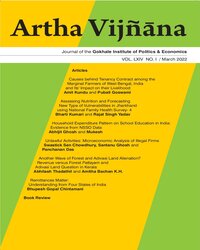A Passage to Sraffa in India
Subscribe/Renew Journal
When my interest in the works of Piero Sraffa awoke in the early 1970s as a PhD student at the University of Kiel in northern Germany, I quickly got the impression that amongst Sraffa’s most attentive and original students were scholars from India: Krishna Bharadwaj, Amit Bhaduri, Sukhamoy Chakravarty, Amartya Sen, and many others. At the time, people talked about an Anglo-Italian school of thought comprising, inter alia, Piero Sraffa, Pierangelo Garegnani, Luigi Pasinetti, Joan Robinson and Nicholas Kaldor, but one could have spoken with hardly less justification of an Anglo-Italo-Indian school of thought. While it is true that some of the Indian scholars mentioned did not contribute directly to Sraffa’s research programme – the elaboration of the classical approach to the theory of value and distribution and the criticism of the marginalist theory – they all shared a critical orientation in economics and variously expressed their disenchantment with contemporary mainstream economics. They may thus be said to have put forward arguments that complemented Sraffa’s work and enlarged its scope. On the occasion of a visiting fellowship at the University of Cambridge, U.K., in 1977-1978 I met several of the aforementioned and was able to intensify contact with some of them on several other occasions, especially during the annual Summer School in Trieste at the Centro di Studi Economici Avanzati, which was organised since the early 1980s. The school brought together non-mainstream economists from all over the world, including Krishna and Amit and several other economists from India, for example Amiya Kumar Bagchi. I invited Krishna, Amit and Gautam Mathur to the University of Bremen, where I held a professorship from 1979 to 1988, and in 2005 I invited Amit as the Graz Schumpeter Lecturer to the University of Graz, which I had joined in 1988.
Subscription
Login to verify subscription
User
Font Size
Information



